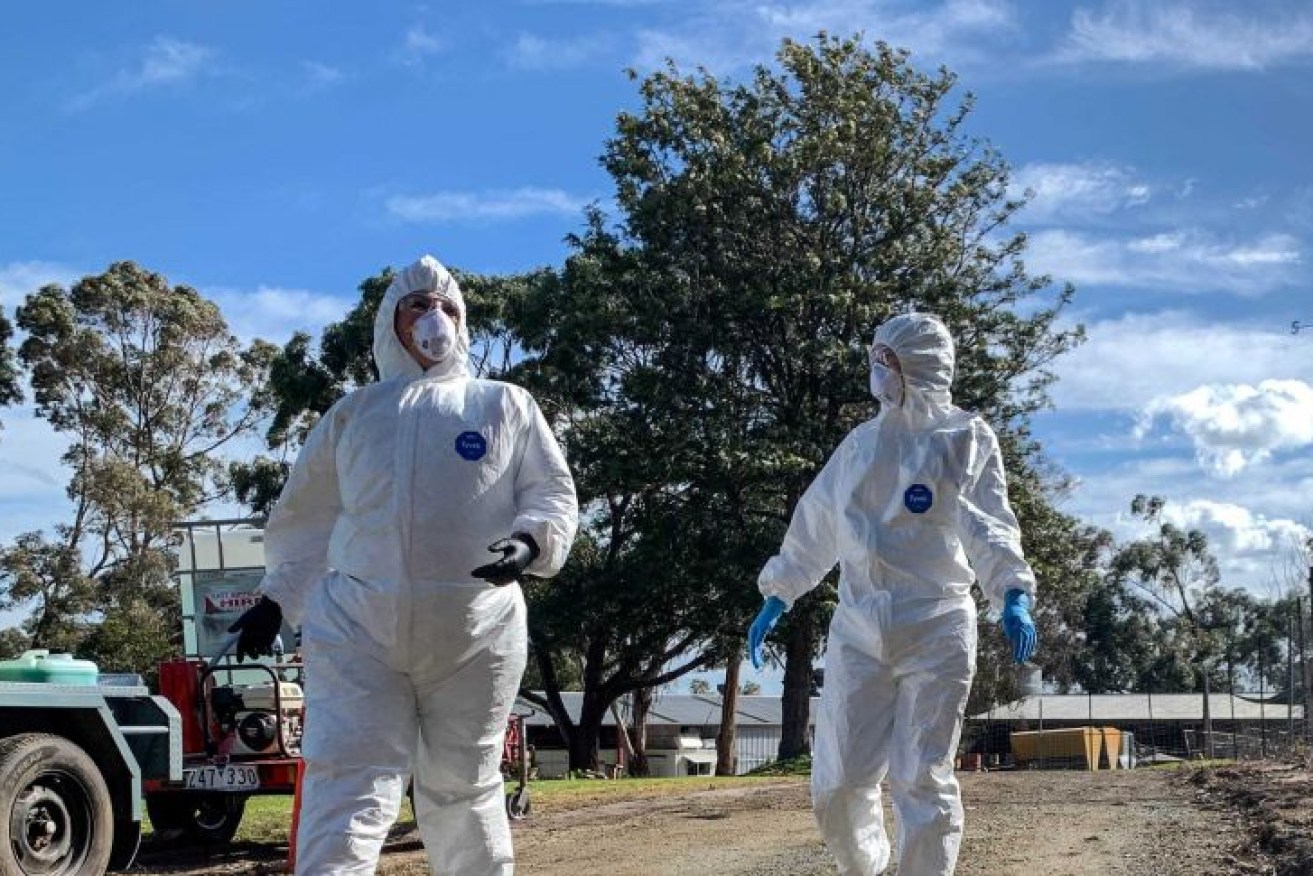CSIRO warns biosecurity systems overhaul needed as threats increase

This year, Australian farmers have dealt with one of the worst outbreaks of avian influenza. Photo: ABC News
Scientists are warning Australia’s biosecurity system needs a major overhaul, with the threat of severe biosecurity events like COVID-19 increasing.
Even a tripling of investment over the next 10 years would result in an increased biosecurity risk, a report released by the CSIRO on Wednesday warned.
CSIRO’s director of health and biosecurity Rob Grenfell said the coronavirus pandemic was a stark reminder of why biosecurity was so important.
“We need to take this unique opportunity to transform Australia’s biosecurity system so it can cope with the growing volume and complexity of threats,” Dr Grenfell said.
“At least 75 per cent of emerging human infectious diseases are zoonotic. This underlines how human, animal, and environmental health are all interconnected.”

The CSIRO’s biosecurity director, Rob Grenfell, says there needs to be an overhaul of our current biosecurity systems. Photo: CSIRO
This year Australian farmers have already dealt with one of the worst outbreaks of avian influenza, an incursion of fall armyworm, which destroys crops, and a new weed is detected every 18 days.
The increase in biosecurity risks is fuelled by global trade and travel, urbanisation, climate change, biodiversity loss, and antimicrobial resistance.
Andreas Glanznig, CEO of the Centre for Invasive Species Solutions, said Australia was under a level of pressure never seen before.
“Business as usual, scaling up our current efforts will lead to increased risk and is going to lead to increased costs, and so what that highlights is that we need to change the game,” he said.

The destructive fall armyworm was detected in Australia in January, with the first sighting in NSW last month. Photo: Daniel Rodriguez
The report made 20 recommendations including a national surveillance program and long-term investment from government in new technologies and data systems.
“Environmental DNA genetic surveillance is already poised to make a significant contribution in being able to detect new bugs, new diseases, new risks, before they even get to Australia,” Mr Glanznig said.
“The opportunity is how we can harness new technology to really bring communities into our community-based surveillance system, so we’re not reliant on just sheer luck.”
Kathleen Plowman, CEO of Animal Health Australia, said a long-term approach was needed, and the report called for a decade-long investment in overhauling biosecurity systems.
“Even with all the money in the world it won’t be sufficient because we have growing volumes of trade, growing movements of people, we have more complexity in our systems,” she said.
“That actually means that the residual biosecurity risk, it just kind of keeps growing and growing and growing – and that’s why we need different approaches.”

At least 75 per cent of emerging human infectious diseases originate from animals. Photo: AAP
Minister for Agriculture David Littleproud said the government would consider the recommendations outlined in the report.
“Biosecurity is one of the key pillars that supports the Australian agricultural industry’s ambitious goal of earning $100 billion by 2030,” he said.
“The Australian government is investing $873 million for biosecurity and export programs in 2020-21.”
-ABC








